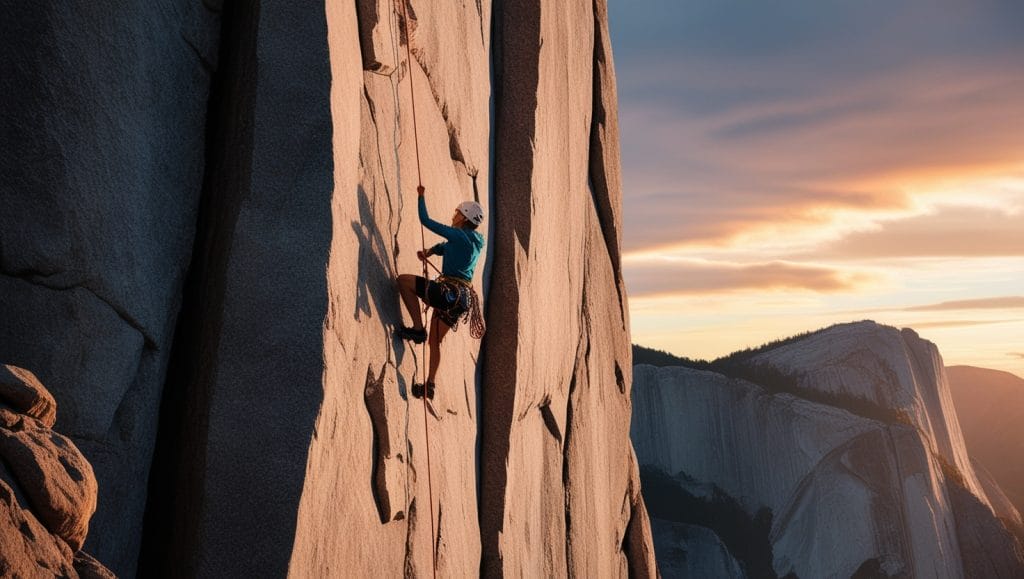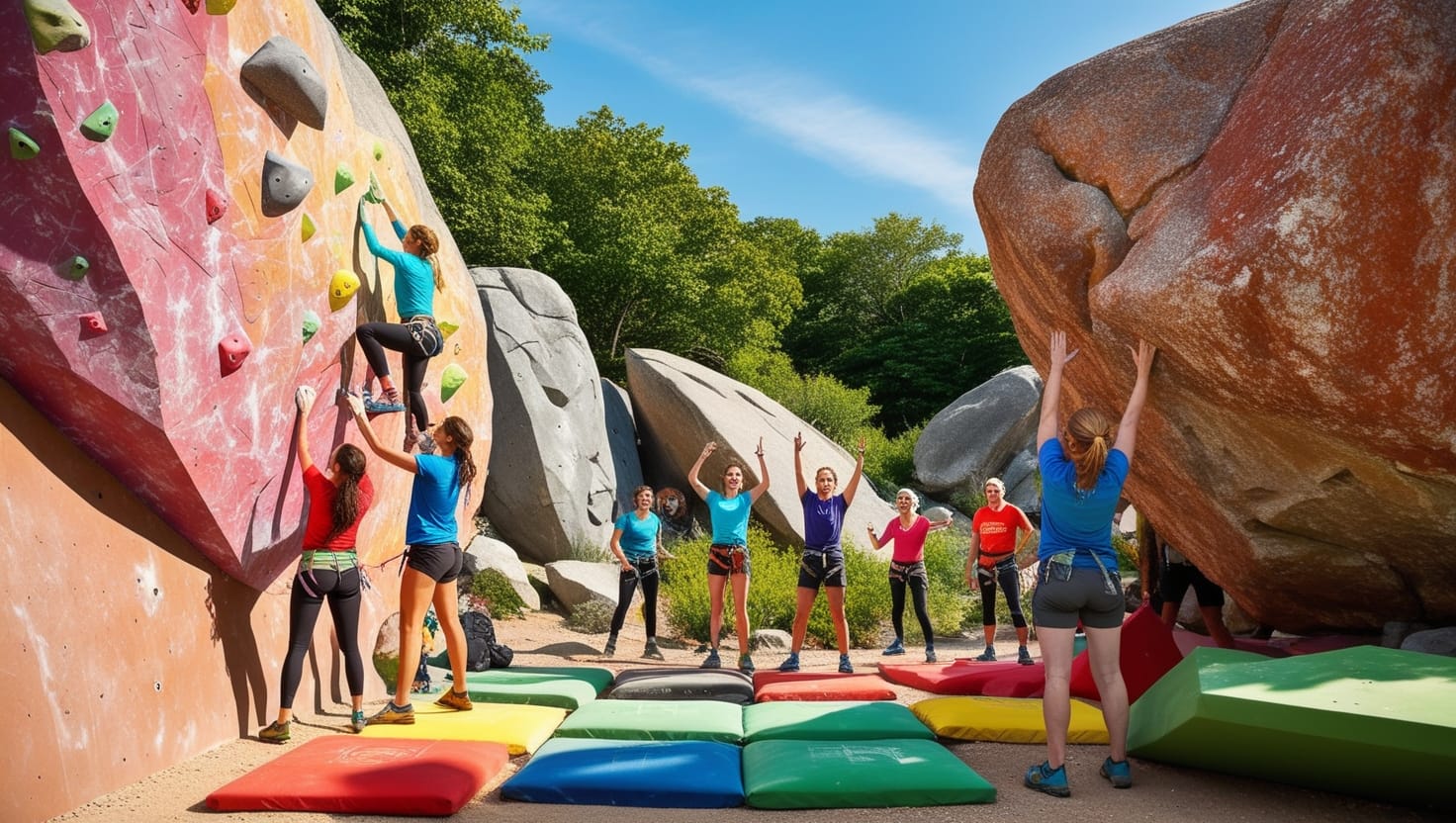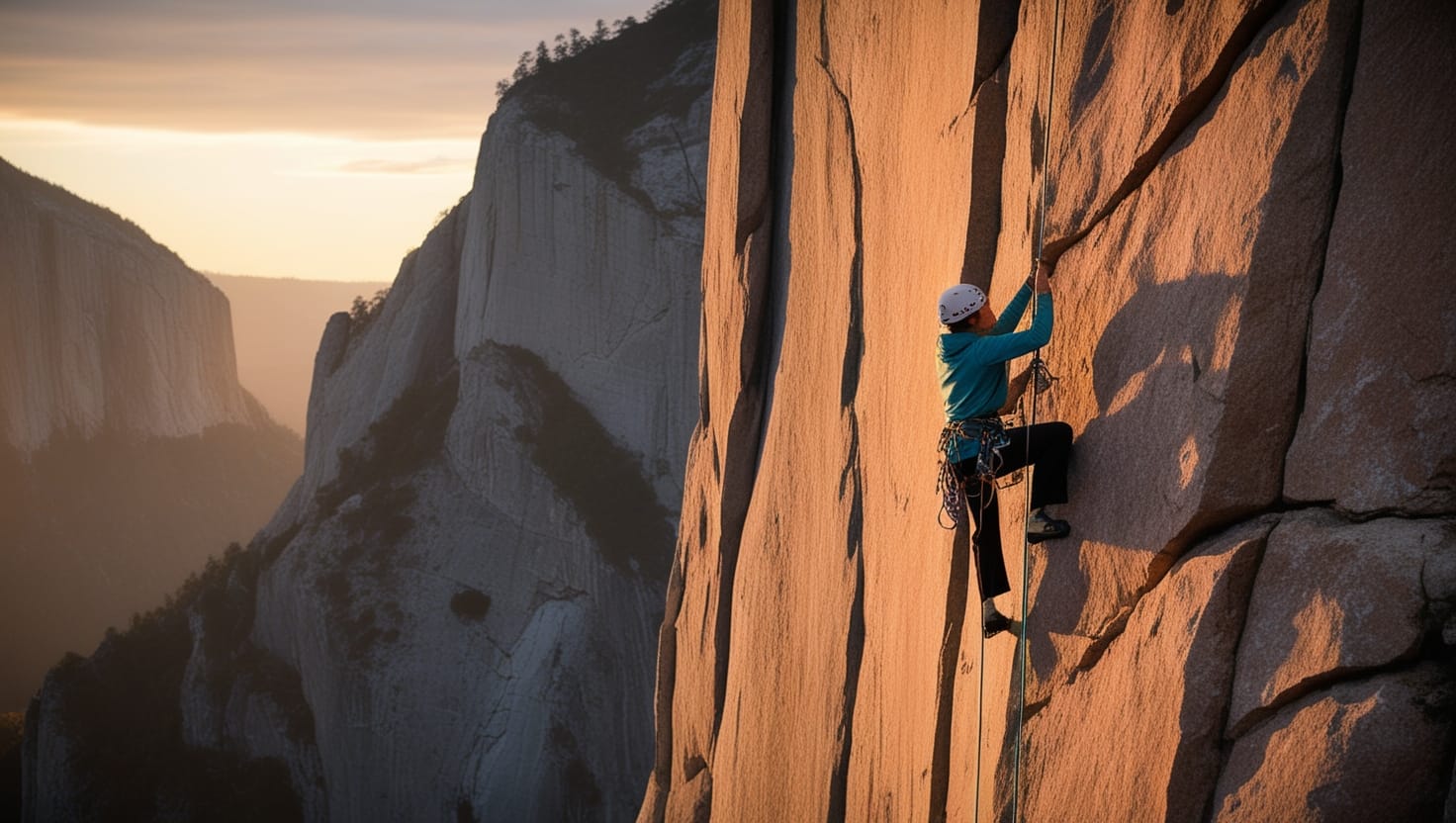Bouldering has become a popular way for people to challenge themselves while enjoying the outdoors. This type of climbing involves tackling short rock routes called “problems” that reach around three to six meters high. Climbers use crash pads instead of ropes for protection, which allows them to focus fully on each climb.
Bouldering builds full-body strength and teaches valuable techniques like balance and grip strength in a low-pressure way. Many find it’s a fun way to spend time with friends while exercising outside. Its growing community includes climbers of all skill levels. For those interested in exploring bouldering further, keep reading to learn more!
Key Takeaway
- Bouldering lets climbers tackle short rock routes without ropes, using crash pads for protection.
- Crash pads allow climbers to attempt routes safely since they break falls from low heights.
- Bouldering builds strength, flexibility and challenges climbers to think creatively about movement on the rock.
What is bouldering?
Credits : Depot Climbing
Bouldering is a fun way for people to climb up rocks without using safety ropes. Folks climb up short rock walls, called boulders, that are usually between 10 and 20 feet tall. This type of climbing is popular because it combines physical challenges with mental puzzles. The routes that climbers take are called “problems.” These problems can be found inside climbing gyms or outside on real rocks.
One great thing about bouldering is that it’s easy for anyone to start. Beginners can learn how to climb pretty quickly without needing much gear. Because the climbs are lower, climbers can use big foam pads—called crash pads—to catch them if they fall. This makes bouldering a safer choice for folks who are just starting out. Many beginners feel more comfortable climbing when they know the crash pads will protect them.
Bouldering is a sport that anyone can enjoy, from kids to adults. It’s a great way to meet new people and be part of a friendly community. Everyone helps and cheers each other on, which makes bouldering fun for all. Whether someone climbs indoors or outside, bouldering offers a sense of adventure and a feeling of accomplishment (1).
Important Things About Bouldering
Bouldering has some things that make it special. First, it’s more about knowing how to move your body than just being strong. While strength helps, climbers also need to learn good footwork and balance. Beginners often pick up these skills from more experienced climbers showing them moves.
Another important thing is all the different “problems” you can try. Bouldering problems come in different levels of difficulty and styles, keeping things interesting. Climbers may find problems that require grabbing small edges or big holds. Each type of hold offers a new challenge. This variety lets climbers build a wide range of abilities.
Safety is also a big part of bouldering. Crash pads help protect climbers if they fall. Many climbers have friends nearby called “spotters.” Spotters watch the climber and can help guide them to land softly. Working together like this with safety gear makes bouldering a fun activity for all.
Gear You Need for Bouldering

To get started with bouldering, climbers don’t need a lot of stuff. The most important thing is a good pair of climbing shoes. These shoes fit snug like gloves and grip the rocks very well. This helps climbers feel safe as they climb. For bouldering outside, a crash pad is also very useful. It acts like a soft landing if anyone falls.
Chalk is another helpful tool. It keeps hands from getting sweaty, which improves how well hands stick to holds. Climbers often use chalk when trying hard routes. Some climbers also use little brushes to clean dirt off holds before climbing. Clean holds are easier to hold onto than dirty ones.
While beginners can rent shoes and pads at gyms, owning your own gear can make climbing more fun. As climbers get better, they may want to buy their own stuff. Having the right gear can boost confidence while climbing.
The Story of Bouldering
Bouldering has a long history that goes back to the 1800s. Early climbers in places like France and England started practicing on smaller rocks without ropes. By the 1930s and 1940s, bouldering became more of a sport especially in Fontainebleau, France. This area has unique “problems” that draw climbers from everywhere.
As time went on, bouldering grew into its own activity. People saw it had its own focus on technique and solving “problems.” Many climbers view bouldering not just as a sport, but as a way to connect to others with the same interests.
These days bouldering is done worldwide. Climbing gyms opened in cities everywhere, making it accessible. The popularity of bouldering led to competitions to show skills. This growth shows how bouldering evolved while keeping what’s fun about friendship (2).
Safety Comes First in Bouldering
Being safe is the top priority in bouldering since climbers aren’t tied to ropes. Crash pads are really important outdoors. These pads make soft landings if someone falls. Pads come in different sizes so folks can pick the right one.
Having a “spotter” is another key thing. A spotter watches closely and helps guide someone down softly. Spotters help ensure people land right on the pad, decreasing chances of injury. Another big skill is falling the right way. Rolling or stepping off feet-first can prevent boo-boos.
Climbing gyms also keep safety in mind. They often have squishy floors and walls to climb on. Many gyms teach newbies safety practices in beginner classes. Learning proper techniques allows people to enjoy bouldering while staying out of harm’s way. With these safety measures, bouldering is a fun activity for climbers of any experience level.
Techniques for Bouldering
Bouldering requires learning certain skills to do it well. Climbers must figure out how to position themselves for an easier climb. This includes using legs effectively and keeping balanced. Good footing is important since it lets climbers push up with their legs instead of just their arms.
Each “problem” may need a different way of climbing. Folks have to test which rocks to hold and how to move. This puzzling part of bouldering makes it exciting. It challenges people to think creatively about their movements. As climbers get more experience, some develop unique styles of their own.
Practicing various techniques helps climbers improve over time. Many attend classes or watch videos to learn new methods. With experience, climbers feel more confident in their skills. This combination of strength and strategy is what makes bouldering rewarding at any climbing level.
How Bouldering Problems Are Rated
Grading systems are used to measure how hard bouldering problems are. In the United States, the V-scale is most common. Problems are rated from V0, which is easiest, to V16, which is super tough. This scale helps climbers pick challenges that match their abilities. Some gyms also use colored holds to show difficulty, making it easy to find problems at the right level.
In Europe, the Fontainebleau system is popular. It uses different grades like 6A or 7B. Each gym may rate problems a bit differently too. This means a V3 in one place might feel different than a V3 somewhere else.
Knowing the ratings is useful. It helps climbers keep track of their progress and set goals. When people complete a problem that was once too hard, it gives them a feeling of achievement. The ratings also encourage climbers to challenge themselves and get better over time.
Ways Bouldering Helps You

Bouldering provides more than just getting fit. It gives your whole body a workout using arms, legs, and core muscles to complete problems. This builds strength, flexibility, and endurance leading to better overall health.
Bouldering is great for your brain too. Climbers must think carefully about how to solve “problems.” People learn to analyze their moves and adjust strategies. This mental challenge keeps climbers engaged and wanting to improve.
Bouldering is also a social activity. Many climbers find community in the sport. They often cheer each other on, share tips, and celebrate successes together. The friendships make bouldering even more fun and encourage people to keep taking part. In general, bouldering is an enjoyable way to stay active while also connecting with others.
Community in Bouldering
The bouldering community is one of the best parts. Climbers cheer each other on as they tackle problems. This encouragement creates a friendly atmosphere where beginners feel welcome. Many climbers make new friends practicing together and sharing bouldering stories.
Climbing gyms often host events and contests bringing everyone together. These gatherings let climbers show off skills and meet others with the same interest. Some gyms also have social nights for climbers to relax and bond outside of climbing.
Online platforms helped create a sense of community too. Climbers can share experiences, tips, and videos with others around the world. This connection supports one another and encourages climbers to keep improving and trying new challenges. Overall, the friendly community makes bouldering a fun and rewarding sport for everyone involved.
Starting Out with Bouldering
Jumping into bouldering is easy and open to anyone interested. Many gyms offer beginner classes teaching the basics. These lessons cover safety, climbing techniques, and gear use. Climbers learn their first “problems” while building confidence.
Climbing gyms make it simple to try bouldering with rented gear. Newcomers can borrow shoes and crash pads before investing in their own. Once comfortable, folks may purchase gear later on.
As practice happens, climbers can challenge themselves more by climbing harder rated problems. Gyms set aside areas for different skill levels. This allows climbers to always find routes matching their abilities. With helpful communities and accessible resources, starting bouldering is an exciting adventure anyone can try (3).
FAQ
What makes bouldering different from top rope and sport climbing?
Unlike rope climbing where you climb high with safety ropes, bouldering requires climbing shorter rock walls without ropes. You’ll find bouldering walls typically under 15 feet high in climbing gyms or outdoor rock formations. The focus is on problem solving and body positioning to complete challenging moves.
How does indoor bouldering help build climbing fitness and grip strength?
Indoor climbing at a climbing gym offers a full body workout. Bouldering requires using various muscles while working through boulder problems. This form of strength training helps you build grip strength naturally as you climb, making it great for overall climbing fitness.
How do climbing grades work in bouldering compared to other climbing styles?
The bouldering grades use a different scale than top rope climbing. The Font scale, developed in the 20th century, is commonly used in Europe, while the V-scale is popular in America. These grades help climbers understand how challenging a climb will be.
What should beginners know about body positioning and heel hook techniques?
Learning proper body positioning is crucial for new climbers. The heel hook is a common technique where you hook your heel on a hold to maintain balance and make upward progress. This technique helps prevent falls and makes climbing more efficient.
What are the main differences between outdoor bouldering and gym climbing?
While indoor climbing offers controlled environments with specially designed bouldering walls, outdoor bouldering takes place on natural rock formations. The gym helps you practice fundamentals before heading outside where autorenew packs and crash pads become essential for safety.
Conclusion
In conclusion, bouldering is an enjoyable activity that many people can experience. It emphasizes technique, safety through crash pads, and an inclusive community. Bouldering develops physical fitness and mental skills like problem solving in a fun manner. Whether climbing indoors or outdoors, bouldering offers an entertaining way for all skill levels to stay active while spending time with others.
References
- https://www.menshealth.com/uk/adventure/a61436815/what-is-bouldering/
- https://www.themanual.com/outdoors/introduction-to-bouldering-guide
- https://www.nytimes.com/2022/04/22/well/move/fitness-bouldering-rock-climbing.html






